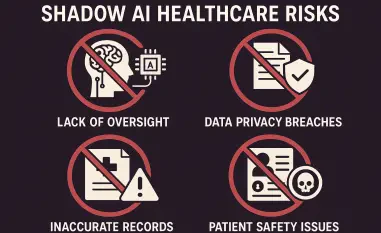Introduction to a Critical Cybersecurity Challenge
In an era where digital transformation drives business operations, imagine a scenario where a single flaw in a widely used enterprise system could compromise sensitive data across global organizations, leading to financial losses and reputational damage that could be devastating. This is the reality facing users of Oracle E-Business Suite (EBS), a cornerstone enterprise resource planning (ERP) solution integral to countless industries. As cyber threats evolve with alarming speed, a critical vulnerability in this platform has emerged as a focal point of concern, prompting urgent warnings from cybersecurity authorities. This report delves into the current risks surrounding Oracle EBS, exploring its significance, the nature of emerging threats, and strategies to safeguard vital business operations.
Understanding Oracle E-Business Suite and Its Importance
Oracle E-Business Suite stands as a comprehensive ERP solution that streamlines critical business functions such as financial management, supply chain operations, and human resources. Deployed by organizations worldwide, it serves as the backbone for industries ranging from finance to manufacturing and retail, enabling seamless integration of processes and data. Its ability to centralize operations makes it indispensable for maintaining efficiency and competitive advantage in complex market environments.
The platform’s key components, like BI Publisher Integration, play a pivotal role in generating reports and facilitating data-driven decisions. However, these components often become prime targets for cyber attackers due to their connectivity and access to sensitive information. With the increasing digitization of business processes, any exposure in these areas can lead to significant disruptions if exploited by malicious actors.
Globally, thousands of enterprises rely on Oracle EBS, underscoring the scale of potential impact should vulnerabilities be left unaddressed. A breach in such a system could halt operations, compromise customer trust, and result in substantial financial losses. This widespread adoption necessitates a thorough understanding of the risks and robust measures to protect against them.
Current Threat Landscape for Oracle EBS
Emerging Vulnerabilities and Exploits
A pressing concern for Oracle EBS users is the zero-day vulnerability identified as CVE-2025-61882, located within the BI Publisher Integration component. This flaw allows unauthenticated remote code execution, meaning attackers can execute malicious commands without needing credentials. Reports from cybersecurity authorities confirm active exploitation of this vulnerability, particularly targeting systems exposed to the internet.
The affected versions span from 12.2.3 to 12.2.14, placing a significant number of organizations at risk, especially those with internet-facing systems or inadequate internal network segmentation. Attackers exploit this vulnerability by sending crafted HTTP requests to the BI Publisher servlet, requiring no user interaction to achieve system compromise. This ease of access amplifies the urgency for immediate action.
Beyond this specific issue, there is a broader trend of escalating cyber threats aimed at ERP systems like Oracle EBS. Motivated by financial gain, data theft, or disruption, threat actors increasingly target these platforms due to their central role in business operations. This evolving landscape highlights the need for constant vigilance and updated security practices to counter sophisticated attacks.
Risk Assessment and Impact Analysis
The severity of CVE-2025-61882 cannot be overstated, with a CVSS 3.1 score of 9.8, categorizing it as critical and indicating a high likelihood of exploitation. Successful attacks could result in devastating outcomes, such as unauthorized access to sensitive data, full system takeover, or lateral movement across corporate networks. These consequences pose a direct threat to organizational integrity and operational continuity.
Indicators of compromise associated with this vulnerability include unusual servlet URIs, unexpected child processes initiated by system services, and suspicious outbound connections on atypical ports. Monitoring for these signs is essential to detect potential breaches early and mitigate damage. Organizations must prioritize tools and processes that facilitate rapid identification of such anomalies.
Looking ahead, the implications of unaddressed vulnerabilities extend beyond immediate technical damage. A breach could erode stakeholder trust, disrupt long-term business relationships, and invite regulatory scrutiny. Proactively managing these risks is crucial to maintaining stability and confidence in an increasingly interconnected digital ecosystem.
Challenges in Securing Oracle E-Business Suite
Securing Oracle EBS presents multifaceted challenges, particularly due to the exposure of critical components to the internet. Many organizations struggle with balancing accessibility for legitimate users while preventing unauthorized access by threat actors. This delicate balance often results in overlooked vulnerabilities that can be exploited with relative ease.
Technical difficulties further complicate the security landscape, as patching vulnerabilities in large, integrated systems like Oracle EBS requires careful planning to avoid downtime. Identifying affected components across sprawling infrastructures demands significant resources and expertise. Failure to address these issues promptly can leave systems exposed for extended periods, increasing the risk of exploitation.
Internal network misconfigurations add another layer of complexity, often providing attackers with an initial foothold to exploit. Addressing these challenges requires a strategic approach, including robust vulnerability management practices, regular security assessments, and minimizing public exposure of critical systems. Implementing these measures can significantly reduce the attack surface and enhance overall protection.
Regulatory and Compliance Considerations for EBS Security
For organizations operating in regulated industries, securing Oracle EBS aligns closely with adherence to cybersecurity standards and guidelines. Frameworks such as GDPR, HIPAA, and PCI DSS impose strict requirements on protecting sensitive data managed by ERP systems. Non-compliance can result in severe penalties and damage to reputation, making security a top priority.
Official advisories and security notices from Oracle, alongside guidance from cybersecurity bodies, serve as vital resources for maintaining compliance. These documents provide actionable insights into mitigating risks and ensuring systems meet regulatory expectations. Staying informed about such updates is essential for organizations aiming to avoid legal repercussions.
Timely application of patches and incident reporting to relevant authorities can further mitigate risks. Transparent communication during a security incident not only aids in coordinated response efforts but also demonstrates a commitment to accountability. Such practices help safeguard against both regulatory violations and reputational harm in the face of evolving threats.
Future Outlook: Strengthening Oracle EBS Against Threats
Emerging technologies offer promising avenues for bolstering Oracle EBS security, with tools like Endpoint Detection and Response (EDR) systems providing real-time monitoring and threat detection capabilities. Web application firewalls (WAFs) also play a critical role in filtering malicious traffic and protecting exposed components. Integrating these solutions can enhance resilience against current and future attacks.
As cyber threats grow in sophistication, evolving security strategies becomes imperative to address new vulnerabilities and attack vectors targeting ERP systems. Organizations must stay ahead of trends by adopting proactive defenses, such as regular penetration testing and threat modeling. This forward-thinking approach helps anticipate potential risks before they materialize into significant incidents.
Global collaboration with cybersecurity entities provides access to real-time threat intelligence and early warning systems, fostering a collective defense against exploits. Sharing insights and best practices across industries can help mitigate the impact of sophisticated attacks. Embracing these collaborative efforts ensures that defenses remain robust in an ever-changing threat landscape.
Reflecting on Findings and Next Steps
Looking back, this report highlighted the critical vulnerability in Oracle EBS that poses substantial risks to organizations worldwide, underscoring the urgency of addressing such threats. The active exploitation of flaws like CVE-2025-61882 revealed the potential for severe operational and reputational damage if left unchecked. These insights serve as a stark reminder of the importance of cybersecurity in maintaining business continuity.
Moving forward, organizations are encouraged to take decisive action by applying the latest patches, including Oracle’s critical updates, to secure their systems. Implementing multi-layered defenses, monitoring for indicators of compromise, and reducing public exposure of sensitive components emerge as key strategies. These steps aim to fortify protections against ongoing and emerging threats.
As a final consideration, fostering a culture of continuous improvement in cybersecurity practices becomes essential. Investing in training, leveraging advanced tools, and collaborating with industry peers offer a pathway to resilience. By prioritizing these initiatives, businesses position themselves to navigate future challenges with confidence and safeguard their critical operations.













